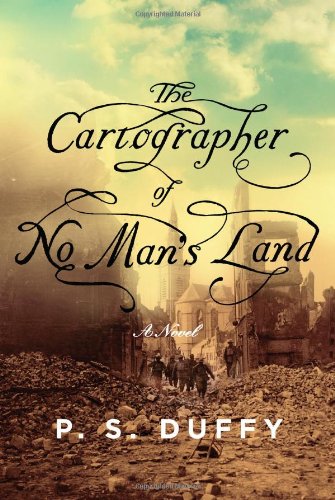The Cartographer of No Man’s Land
Holidays in Nova Scotia inspired P. S. Duffy’s setting for her first novel, The Cartographer of No Man’s Land. Duffy promises a fresh examination of the effects of World War I on soldiers, their families, and their community. While her narrative competently examines the relationship between Lieutenant Angus MacGrath and his son Simon, Duffy fails to fully explore their relationship with their wife and mother, Hettie MacGrath.
Notification that Hettie’s brother, Ebbin, is missing in action motivates Angus to enlist to find him. Defying his pacifist father, Angus thinks he will serve as a cartographer but is instead sent to the Front, where he witnesses the death and hysteria of trench warfare. Complicating his search for Ebbin is his own struggle to stay alive and his love for a French widow. Contrasting his experience is Simon’s growing relationship with his Nova Scotia town’s German-born schoolteacher. Throughout, Hettie remains ambiguous, a woman who married Angus because she was pregnant, a woman we could admire for taking over the family business but condemn for her lack of effort with Angus’s physical and psychological struggles on his return. As Angus’s withdrawal alienates his son, a year and a half passes before a neighboring veteran gives him the redemption he needs, just as Simon’s life is endangered.
Although Duffy’s focus on Angus and Simon’s relationship gifts the story with two rounded male characters, and we are given an indication that Angus has healed, her neglect of Hettie robs the story with a flat character, leaving the narrative with a sense of something missing.










